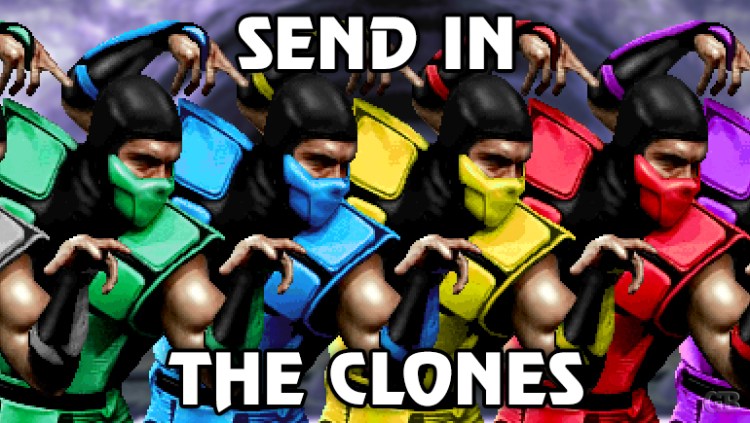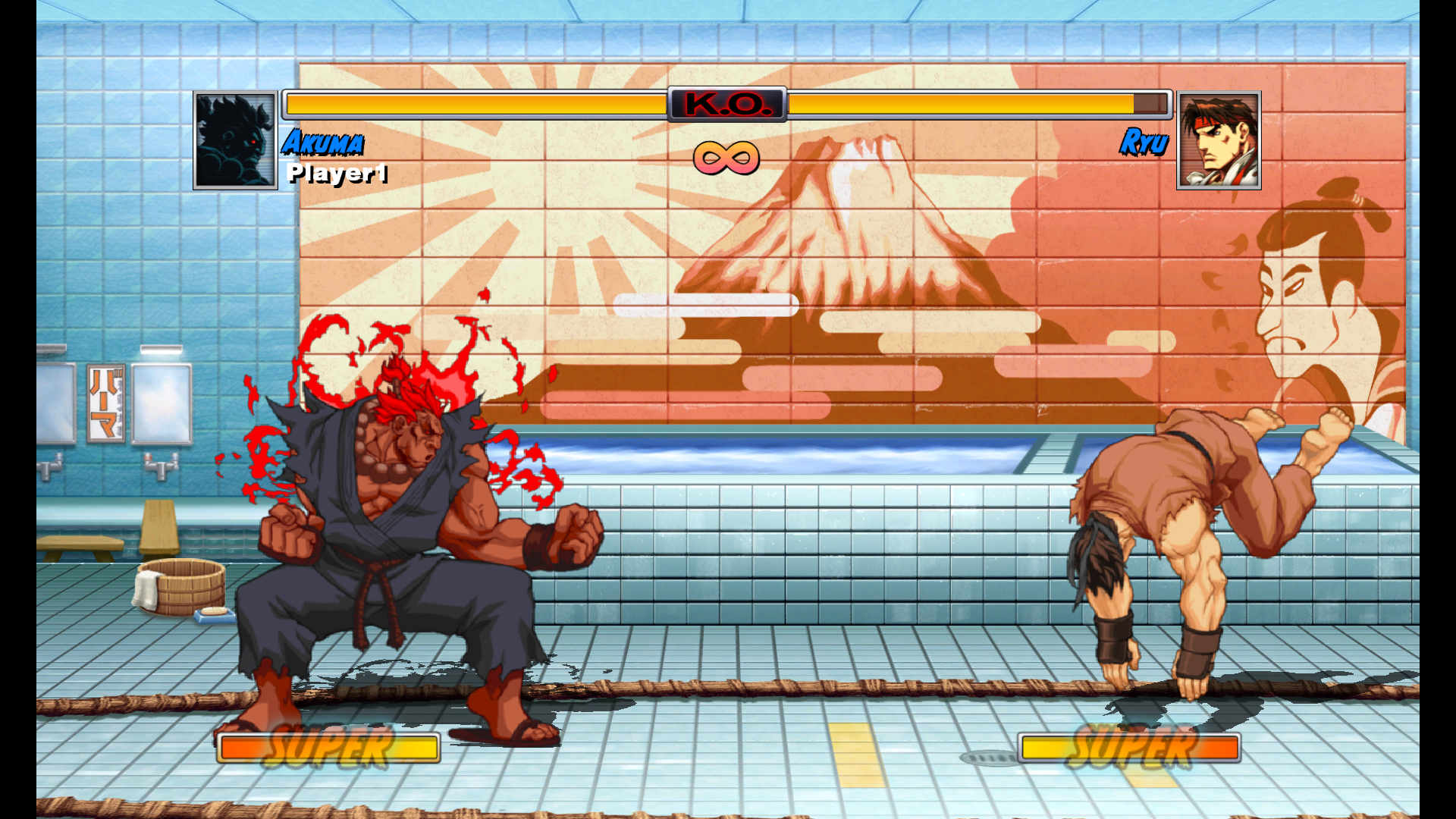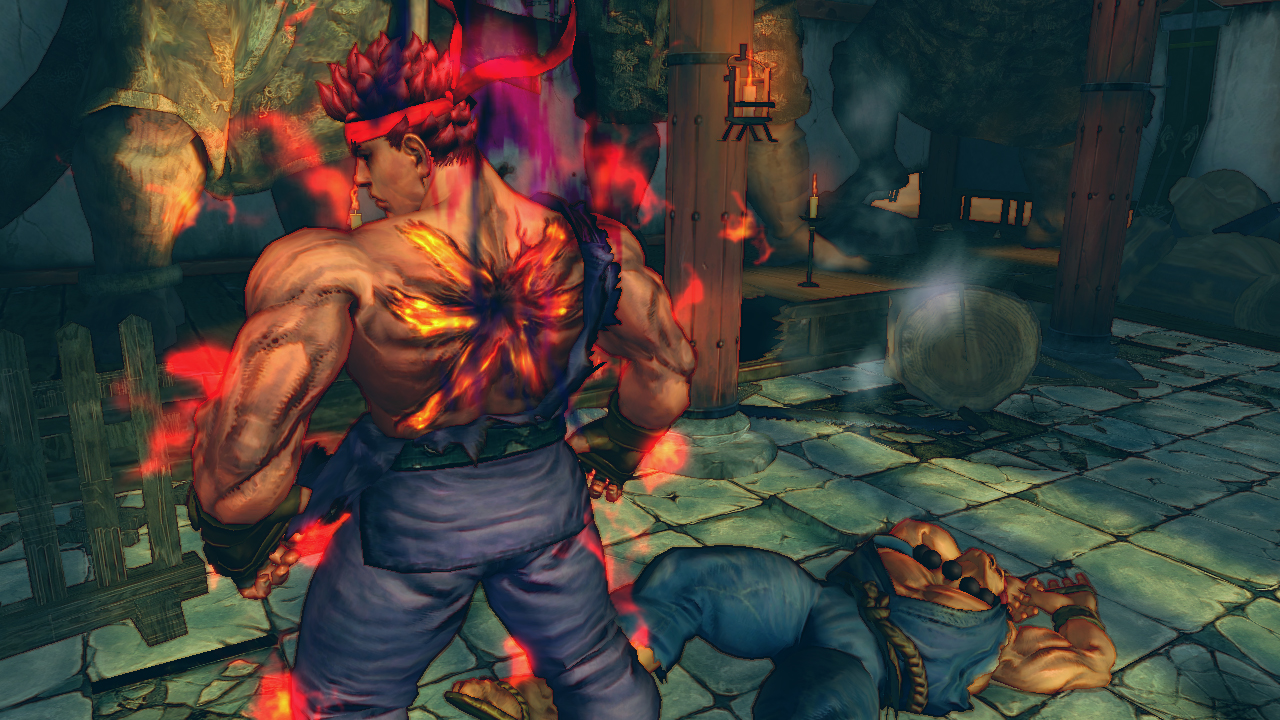Evil Ryu. Cyber Sub-Zero. Devil Jin. Orochi Iori. Shadow Labrys. Never count out a fighting game developer’s ability to recycle existing assets to assemble a new warrior. In the past year alone, Capcom released Decapre, a blatant Cammy clone, for Ultra Street Fighter IV. Meanwhile, Persona 4 Ultimax will bring in two versions of the same villain: Sho Minazuki.
Some additions are as dull as you would expect, but others rise above their lot to create their own fanbase. Let’s journey through the halls of history to pay homage to the best and worst of these pseudo-newcomers.
The Street Fighter Karate Guys
Hall of Fame: Akuma (Super Street Fighter II Turbo)
Model: Ryu
Of course, Capcom is no stranger to reusing models. Ryu has had Ken as a rival since the first Street Fighter, and over time he would meet more “shotos” who had an affinity for karate gis, fireballs, and uppercuts. Akuma was the first to show up, and from his first appearance in Super Street Fighter II Turbo as a secret boss, this master demonstrated unprecedented techniques such as air projectiles and his Raging Demon super grab. His status as a “glass cannon” in versus play also opened up a new playstyle for those who want a ton of great moves at the cost of terrible health. Meanwhile, Akuma’s rivalry with Ryu gave the original a new dynamic as he had to prove to his master’s would-be murderer that the path of a true warrior is not soaked in blood.
Hall of Lame: Evil Ryu (Street Fighter Alpha 2)
Model: Ryu
Isn’t Akuma already a dark version of Ryu? So why do we need an Evil Ryu with a few of Akuma’s moves? To be fair, Evil Ryu did become more interesting in the Street Fighter IV series after gaining some new skills that turned him into a big-damage machine. Even then, however, the “Evil” moniker helped turn the rivalry between Ryu and Akuma from a philosophical conflict to whether turning yourself into a demonic Super Saiyan is a good idea.
Masked Warriors
Hall of Fame: Reptile (Mortal Kombat)
Model: Scorpion and Sub-Zero
It’s even easier to add to the roster when one of your warriors covers his face, especially in games that used “digitized” sprites taken from real-life models. Originally a hidden opponent that you had to meet convoluted conditions to face, Reptile represented two Mortal Kombat traditions: Hidden secrets and making new warriors just by swapping the colors of its masked ninjas. After all, Scorpion and Sub-Zero symbolized the franchise, and the trick helped the team save precious memory. As time went on Reptile would turn more lizard-like with scaled skin and acidic attacks, and MK’s numerous ninjas would remain popular whether man, woman, or cyborg.
Hall of Lame: Blade, Arkane, Khyber, and F7 (Street Fighter: The Movie)
Model: Each other
So who else is in M. Bison’s criminal organization besides a boxer, a matador ninja, and 12 brainwashed assassins? Apparently these stormtroopers from the camp classic movie who made their only videogame appearance in the only Street Fighter title that uses digitized graphics. Each mook had his own color (red, blue, yellow, and black) and different special moves, but F7 negated the point of that by having the arsenals of all the others combined. Not only did these living props never make it to a major Street Fighter game, but they also never even made it to the console version of the same game.
Next: Blood rivalries born from family ties or forbidden experiments




